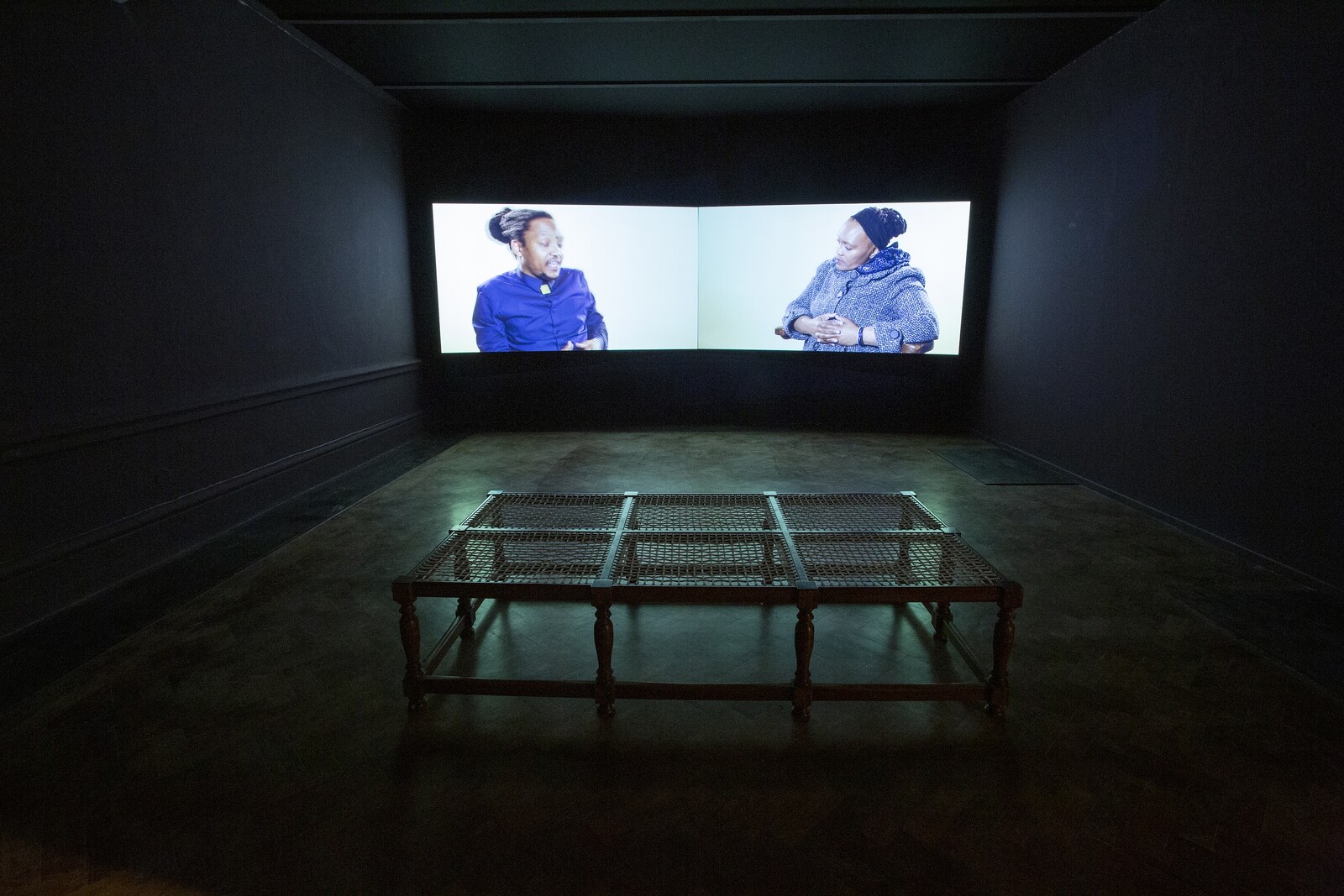Categories
Subjects
Authors
Artists
Venues
Locations
Calendar
Filter
Done
April 4, 2025 – Review
Sue Williamson’s “There’s something I must tell you”
Keely Shinners

In a photograph, two chairs, draped in white cloth, stand sentry around a rubble heap—old fences, shutters, doors. The chairs belong to the Ebrahim family. In 1981, the Apartheid government forcibly evicted the Ebrahims from their home, Manley Villa—one of the last to be demolished in District Six, a historically multiracial community in Cape Town that had been declared a “whites-only area” in 1966. Sue Williamson’s exhibition at the city’s Gowlett Gallery, “The Last Supper,” displayed detritus the artist (who is white) had collected from the demolition sites (prompting a visit to the show by police). That detritus is gone now, though photographs of the exhibition remain. Photographs and, miraculously, these chairs.
The chairs feature prominently in a new installation called Don’t let the sun catch you crying, created for Williamson’s first major retrospective, curated by Andrew Lamprecht. Nearby, former District Six residents and their descendants are captured in a series of photographs, enjoying a meal of cupcakes and cool drinks in the brush where the neighborhood once stood. Despite a 2018 Land Claims Court ruling that ordered the government to address land restitution claims, District Six remains largely undeveloped. The community continues to fight for the right to …
March 13, 2024 – Review
Esther Mahlangu’s “Then I Knew I Was Good at Painting”
Ben Eastham

This retrospective of the Ndebele painter and unofficial artist laureate of post-Apartheid South Africa presents two origin stories. The first, from which its title derives, tells of how Esther Mahlangu first identified as an artist when, having been reprimanded for daubing the walls of her family home as a child, she persevered until she was good enough to be permitted by her mother to paint its façade. The second, taking place several decades later, arrived when a group of European researchers came to her village to seek out the woman responsible for decorating the house in their photograph. “We want you,” they said, “to come to Paris.”
The invitation was to participate in the 1989 exhibition “Magiciens de la Terre” at the Centre Pompidou, a show that continues to cast a long shadow over attempts to decenter or decolonize the representation in western institutions of global visual culture. Mahlangu contributed a reproduction of her own painted Ndebele house (reproduced in miniature in this exhibition), setting in train a career so prolific that her vivid polychromatic designs now serve as visual shorthand for Nelson Mandela’s vision of South Africa as a comparably vibrant and harmonious “rainbow nation.” These instantly recognizable patterns—since …